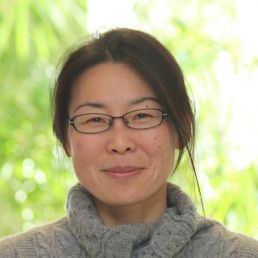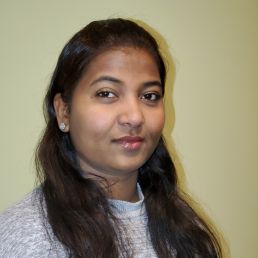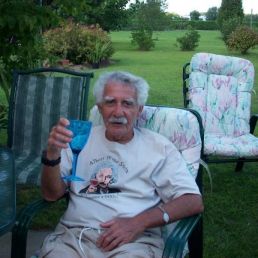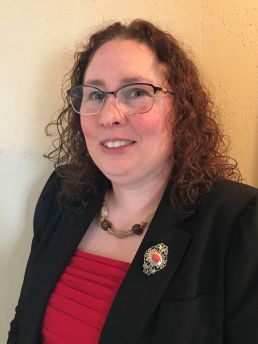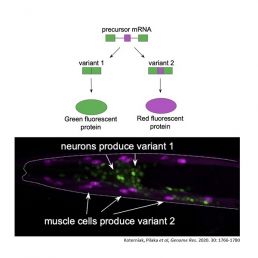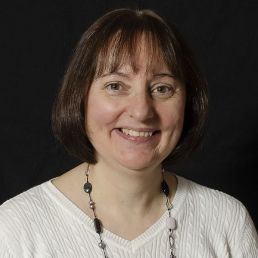Professor Keiko Yoshioka goes with optimism to a career in plant science
Professor Keiko Yoshioka recalls the joy of running through fields of grass that were as tall as her near her childhood home in Osaka, Japan. As a young student, she learned the role of agricultural innovation in avoiding worldwide food shortages. Curiosity about the verdant growth around her led to agricultural studies at Hokkaido University. She feels her success depends in great part on the power of education, particularly the innovative instruction she received at her University-supported middle school.
However, Yoshioka and her classmates suddenly confronted a lack of job opportunities for educated women upon graduating with their BSc. Although she proceeded to earn a PhD and a post-doctoral role at the prestigious RIKEN institute, Yoshioka felt that there would be no opportunity to gain a professorship in Japan.
At the time, Yoshioka had a minimal grasp of English, but her inherent drive to “go with optimism!” led her to post-doctoral jobs at the Waksman Institute in New Jersey and the Boyce Thompson Institute at Cornell University. She knew to become a professor she had to set the goal of publishing discoveries at the top of her field. Although she was not afraid to fail and move to another job, her discoveries yielded several top publications on plant-pathogen interactions.
Yoshioka says that many students see a professorship as the goal of a successful career. As a Professor, Yoshioka advises them that she defines success as happiness at what you do. “Take the time in your 20s to figure out what you want so you are never in a position to regret a MSc, PhD or postdoc.”
Yoshioka’s search for her desired professorship landed her a position at U of T to continue her studies of plant-pathogen interactions. She has come to love Canada, and this city whose broad and deep scientific opportunities also support her partner. Initially, her lab and her department’s focus was on the molecules inside plant cells, but she gradually started applying her knowledge of what was happening within the cell to effects on crop plants in the real world.
One of Yoshioka’s most cherished projects is a collaboration regarding the devastating coconut blight disease in West-Africa. Researchers from Africa came to Toronto for training in molecular biology to characterize and combat coconut pathogens. Yoshioka is happy that this initiative also improved the lives of the farmers, primarily women, who depend on their coconut crop. Furthermore, this project led to her most recent research endeavor, the immunization of plants via beneficial soil microorganisms.
Dr Sakthi Moorthy chasing the dream to be a scientist from India to Canada
For International Women’s Day 2021, Cell & Systems Biology (CSB) is highlighting the scientists behind the science we publish, and the staff that support them.
Dr Sakthi Moorthy has been a valued member of the Mitchell Laboratory in CSB, and we would like to congratulate her on her new position as Development Scientist at the Centre for Commercialization of Regenerative Medicine (CCRM).
Even as a child, Moorthy’s scientific inclinations led her to collect and categorize leaves to better classify the variety of plants near her home in Chennai, India. Her strong intellect also means she covets the challenge of competing to win at chess. Although her parents would have been content to see her happily married, Moorthy impressed them by avidly pursuing science at school and fighting for excellence in all subjects. In high school and university, she pursued a passion for molecular biology.
Moorthy’s strongest motivation was to bring the benefits of research discoveries to patients, so she pursued a Masters and PhD in Biotechnology. Work placements during her studies put her in a position to study vaccine production at industrial facilities. Moorthy says her greatest achievement was successfully competing for prestigious Research Fellowships from India’s ICMR and CSIR to continue her studies of infectious disease treatment.
Moorthy moved to Canada with her 6 month old baby for better research opportunities, and began seeking a suitable position when her child was 2 ½ years old. With no recent experience or knowledge of Canadian research culture, she found it hard to step back in to find a job to prove her worth. Her drive and her skills in molecular biology and cell culture led her to a technician job in Prof Jennifer Mitchell’s laboratory in CSB.
Bringing her customary technical precision, she impressed Mitchell with contributions to a groundbreaking paper using the new CRISPR technology. Intrigued by unsolved puzzles in the paper, she developed a research project to study the genetic factors that drive mouse embryonic stem cells to become neural stem cells. She wrote or contributed to seven publications from the Mitchell laboratory, all while training students and managing lab facilities.
Her strong publications and skills with gene editing and cell culture led to her current position at CCRM. Working with startups to make hypoimmunogenic cell therapies that comply with regulatory requirements puts her at the leading edge of the biotechnology industry. She is impressed to see that women in her facility will spend long hours running the bioreactors, in contrast to the vaccine facilities of her youth, where only men were considered suitable for the physical requirements of keeping the bioreactors running.
With CCRM’s goal of transitioning discoveries from benchside to bedside, Moorthy is fulfilling her wish to bring direct benefits to patients from fundamental discoveries.
In Memoriam: Professor Stephen Tobe leaves legacy through mentorship and research in arthropod endocrinology
We are sad to share news of the passing of Professor Emeritus Stephen Tobe. He was a world traveller and world-renowned researcher in arthropod endocrinology, specifically the regulation of juvenile hormone biosynthesis by microRNAs and neuropeptides called allatostatins.
CSB's own Professor Chris Garside earned his PhD in Tobe's lab and relates that "He was an inspiration to me as a scientist. He was my mentor; and he encouraged me to look beyond the surface and to ask the question why? He was paradoxical – both intimidatingly brilliant, and yet approachable. I always loved discussing life over beers at the Madison Avenue Pub, his office away from the University."
In Tobe's lab on the fifth floor of the Ramsay Wright Zoological Laboratories, he primarily studied the endocrinology of cockroaches. He branched into other insects like caterpillars, locusts, fruit flies as well as crustaceans like red crabs, due to the way endocrine biosynthetic pathways diverge between these arthropods. "He gave me and many students an opportunity and the freedom to pursue what we were interested in discovering in the lab. He allowed us to make mistakes…but [taught] that we must learn from those mistakes," recalls Garside.
A prolific scientist, Tobe continued to publish into 2020 with collaborators in Hong Kong, close to the property he shared in Thailand with his wife Martha, who survives him.
You can read more about Stephen and leave a tribute through this link to his obituary.
Alan Moses decodes and remodulates proteins to earn Canada Research Chair
Professor Alan Moses of Cell & Systems Biology is at the forefront of data science in cracking the lingering mysteries underlying the function of protein molecules. He has been renewed for his position as Canada Research Chair (CRC), recognizing that he will be leading further advances in his field.
The Moses laboratory is working to decrypt the pattern behind the enigmatic “intrinsically disordered” regions (IDR) within proteins. The shape of many protein molecules is known, even down to the coils and sheets of individual regions. However, IDR resist structural analysis and prediction as they contain no set sequence of amino acids. IDR are widespread and, when mutated, can be involved in human disease.
Moses’ lab makes testable predictions about the function of residues within IDR by examining the overall qualities retained by these regions during evolution. In systems biology experiments that validate these predictions, they study the role of IDR in transduction of signals from outside the cell to the genes inside the nucleus of the cell. This has led to development of further predictive models examining modulation of signal transduction in the cell.
Moses’ quantitative cell biology initiatives have produced high-throughput, automated image analysis tools for microscopy. These tools address the issue that knowing the function of proteins is important, but where the proteins are found in the cell will determine whether they can accomplish their role. Moses’ lab produces artificial intelligence models that autonomously learn about protein biology from image analysis; the model can directly predict where many different proteins will be found within the same cell.
Moses has been a dedicated supervisor to his graduate students and promotes engagement in his laboratory by undergraduate students. His commitment to academic openness is evident on his website, where he shares his databases and tools with the community. Alan Moses exemplifies our dedication to both Cell Biology and Systems Biology.
Congratulations, Alan!
CSB Graduate Students gather online to raise funds for the Christmas Wish Toy Drive
Graduate students at Cell & Systems Biology have spent this challenging year working from home since March and taking distanced shifts in the lab since July. On December 11th, they gathered online to see each other, to spread some holiday cheer and to raise money through the CSBGU Raffle. They raised a total of $880.00 for the CHUM FM Christmas Wish Toy Drive. Masters candidate Shanelle Mullany drew the names for prizes including an espresso maker, a donated Thermo-Fisher gift basket, a chocolate gift basket donated by Wisent Bioproducts and 2 donated subscriptions to Biorender. Gift cards were also donated by Starbucks, Subway, Baskin Robbins, and Tim Hortons. The CSBGU feels that "We are glad to have the opportunity to give back after such a trying year. Happy Holidays!"
CSB staff and faculty normally gather with the graduate students to celebrate the holiday, but this year the Department declined the holiday party and doubled the money raised by the CSBGU to donate $1760 to the Daily Bread Food Bank . "There's a lot of need this year," said CSB Chair Nick Provart in commending the fundraising efforts of the students.
Health and Safety is Front and Centre in Award for Lisa Matchett from USW 1998
Gentle reminders and firm requirements are the ways Lisa Matchett keeps our labs and offices safe. For her actions on Health and Safety, she has earned the 2020 Health and Safety Award from United Steelworkers Local 1998. This award recognizes the outstanding performance of a U of T staff member in USW 1998 who works towards fostering and promoting health, safety, and environmental issues in their workplace.
When new regulations are instituted that are difficult to envision in a laboratory environment, Matchett works out implementations that keep our workplace functioning safely. She displays a proactive and preventative commitment to health and safety with posted reminders by our elevators and inspections throughout our buildings. Her clear and unambiguous instructions promote continuous improvement of health and safety in the workplace and encourages others to initiate health and safety policies and procedures.
Thank you, Lisa, and congratulations on your Award!
Collaboration and Innovation by Prof Nicholas Provart earns a Highly Cited Researcher award
Nicholas J Provart, CSB Professor and Chair, has earned a Highly Cited Researcher award for 2020 from Clarivate Web of Science. His publications in journals including Science, Nature and Plant Cell were in the top 1% by citations world-wide for the field of Plant & Animal Science. Provart is one of only four Canadian researchers to earn this award in Plant & Animal Science.
Provart’s research interest is developing computational tools and analyses for plant biology, along with wet-lab validation of gene regulatory networks revealed using these tools. Citations are an indication that other researchers are referencing his work and using the tools that Provart invented. One of his most highly cited recent papers is “ePlant: Visualizing and Exploring Multiple Levels of Data for Hypothesis Generation in Plant Biology“. You can experiment with this tool at the Bio-Analytic Resource.
Provart exemplifies the collaborative nature of science by partnering with many different research groups. He has applied his innovative computational techniques to collaborations on rice, wheat, maize and poplar. His studies have resulted in novel insights on polyploidy, seed germination and plant hormone response.
Congratulations, Nick!
Splicing and remixing coded cellular messages reveals new controls on nervous system development.
The Calarco lab in Cell & Systems Biology at U of T has unveiled the signals that direct how RNA messages are remixed within the diverse organs of an animal in a new publication “Global regulatory features of alternative splicing across tissues and within the nervous system of C. elegans”. When a gene is turned on, it produces a messenger RNA (mRNA) that is translated to make a protein. But in moving from DNA to translation, the message can be remixed by splicing to produce a range of similar proteins with different purposes the way a music producer splices together different music tracks for the same song.
As RNA is produced from DNA, the linear protein coding ‘exons’ have ‘introns’ between them. Like cutting out unnecessary dialogue in a music track, splicing removes the intron, resulting in an mRNA of spliced-together exons. Some exons are not included in the final mRNA in all cells, and these remixes are termed “alternatively spliced (AS)”. Using a new approach for enriching mRNA from specific cell types, the Calarco lab extracted RNA from different tissues and individual sets of brain cells of the nematode worm C. elegans and then selected all the sequences that showed alternative splicing.
Bina Koterniak, a Ph.D. student in the lab, then analyzed this database of sequences to find patterns in the RNA codes that resulted in alternative splicing. Intriguingly, Koterniak’s analysis identified hundreds of novel AS transcripts both across tissues and even in specific brain cells of the animal. This process thus generates a remarkable amount of diversity even in an organism with a compact nervous system.
Fellow graduate student Pallavi Pilaka selected a few of those short codes from multiple genes that appeared to be specific to muscle or nervous system tissue. Koterniak and Pilaka, the co-lead authors on this study, noticed that a protein-RNA interaction site specific to the UNC-75/CELF protein was present in many of the AS transcripts.
By creating a mash-up of the coded RNA and an RNA for coloured fluorescent proteins, they made some cells light up red and others green depending on the code contained in the spliced region. Remarkably, diverse colour patterns in individual tissues and brain cells could be observed in live animals. Pilaka was surprised and excited to see that for genes with a mutated UNC-75/CELF binding site, the green signal was greatly reduced. This mechanism is thought to occur due to splicing repression by UNC-75/CELF via interactions with the splice site.
With this information, Calarco’s lab could delve deeper into the patterns in AS RNA and try to infer the regulation behind these patterns. Koterniak was happy to have such a large dataset to work with, as it yielded not just deep knowledge of AS sequences, but also broad representation of different tissues.
By teaming up with Iva Pritišanac, a postdoctoral fellow in the labs of Alan Moses and Julie Forman-Kay, Koterniak found that AS exons more often overlapped with and encoded intrinsically disordered regions in proteins. Moreover, AS exons are often shorter than non-AS exons but are flanked by longer intron sequences, likely impacting how they are recognized by the splicing machinery. Their studies yielded a further surprise that among these tissue-regulated exons are several microexons only 3-27 nucleotides in length. These microexons were found in other species of worm, indicating that they were conserved through millions of years of evolution. “The conservation is not just in the spliced exon, but spreads out into adjacent introns, and it was exciting to see these signatures in genes with tissue-biased exon splicing patterns” notes Pallavi.
Calarco summarizes that “our results overall show that these features associated with AS exons are conserved with striking similarities to vertebrates, making C. elegans a great model system to better understand this critical layer of gene regulation. We are getting an indication of universal evolutionary constraints shaping the genes and protein regions affected by alternative splicing. An important goal will be to further explore how these conserved AS exons are affecting the proteins they encode and ultimately what impact this diversity has on cellular function, particularly in the nervous system.”
Alumna Manal Siddiqui receives Arbor Award for her dedicated mentorship of CSB and HMB students
It is always a joy to see our alumni return to guide current students. One of our alumna, Manal Siddiqui (BSc, Vic 0T6) has received a 2020 Arbor Award for being a dedicated mentor to students in CSB and in the Human Biology (HMB) Program.
Siddiqui was an HMB student and conducted research in Professor Ashley Bruce’s lab. Since graduating, she has mentored a number of CSB undergrad and grad students. They greatly appreciate her willingness to always be available to answer their questions and to provide guidance. One example of Siddiqui's dedication is that almost a decade after graduating, she sat for an interview when she was Manager at Clinical Trials Ontario to help undergraduates understand her career progression. She is currently Director, Health Strategic Partnerships at the Vector Institute.
Thank you for your mentorship!
Janet Mannone reveals her greatest challenge over 35 years at U of T
Janet Mannone is the Undergraduate Coordinator for CSB, and an expert at responding to the needs of students. She consults, informs and encourages educators within CSB to give our students the best course possible. Her actions refine the remit of our courses and knit our disparate programs together.
This month, Mannone has been recognized for 35 years of service to U of T, and she combines that experience with a commitment to excellence. She has navigated many difficult transitions over 35 years at U of T, but says that her greatest challenge was learning new administrative systems in a web-based environment as they were being developed.
This experience was useful as the pandemic hit in March 2020, ending in-person classes. With tenacity, extensive consultation and a commitment to comprehensive outcomes, she facilitated the department's roll out of online teaching in a short period of time.
We congratulate our valued colleague Janet on her 35 Long Service Award!

